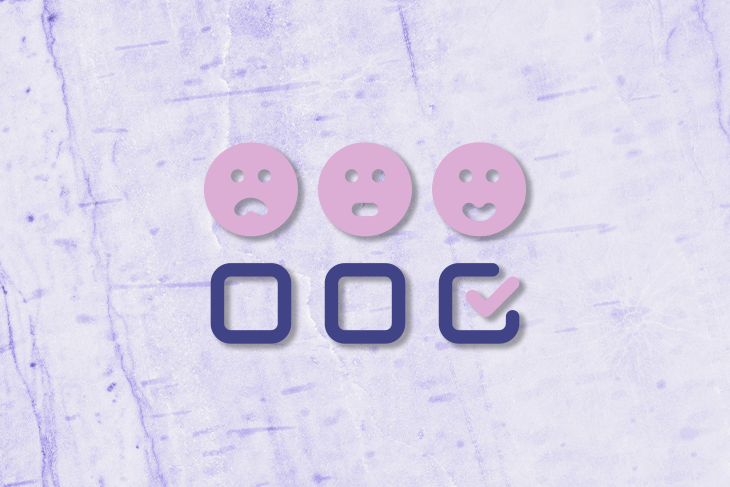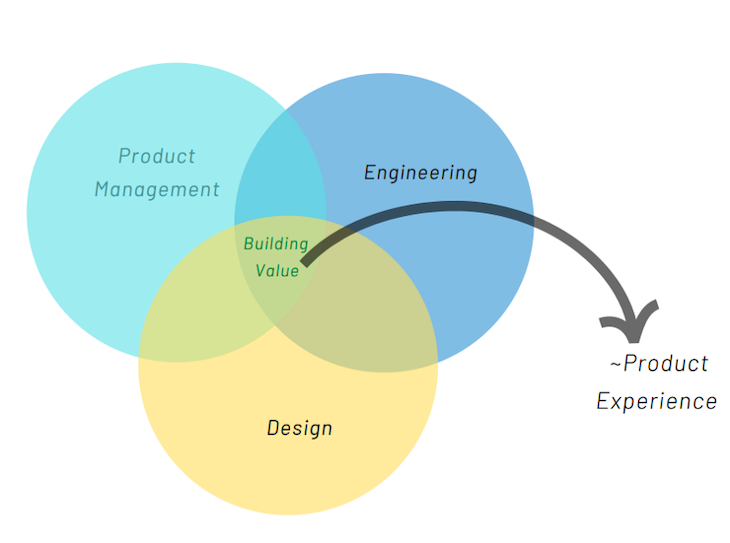The product experience (PX) is a subset of the customer journey. It demonstrates the behavior and engagement exhibited by the user within the premises of the product.

User behavior and engagement are often referred to as interaction. A good product experience enables satisfactory interaction to take place, empowering customers to explore the product intuitively to accomplish their jobs.
PX is essential for product-led growth because it contributes massively to shifting customers from freemium to subscription and retention based on their past and subsequent interactions with the product. It is measured using product metrics such as daily active user (DAU), monthly active user (MAU), Net Promoter Score (NPS), customer satisfaction score (CSAT), etc. As these measures grow, the impact comes from an increasing rate of customer acquisition, value-driven features, efficiency, speed, and product effectiveness.
Best practices to create a good product experience include gathering customer feedback, adhering to quality, following user-centered design (UCD) principles, running continuous experiments, and applying data-driven product management strategies.
The definition of product experience may vary slightly between B2B and B2C products. However, the underlying fundamentals remain the same: solving customer problems, scoring high customer satisfaction, and increasing customer efficiency by shipping the right product values to them.
For B2C products, the PX journey starts when the user covers points A to B within the core application.
Product experience is far more complex in B2B because it includes not only the core product experience but also covers part of the customer journey that comes through product manuals (both digital and offline), workshops and demos, and personalization and customization of product features and subscriptions. The individual touch points collectively bring a world-class experience for a B2B customer.
Customer experience (CX) is the overall experience that the customer gets across the touch points of the conversion funnel:
Hence, it is not limited to the knowledge of the core product and the onboarding support around it, but often covers various channels that customers come across — pre-purchase interactions with sales/marketing, social media, landing page, trials, purchase, CRM, fulfillment, transportation, loyalty programs, etc.
These touch points collectively define an end-to-end customer journey, and a good or bad customer experience is defined by how customers are engaged throughout the journey.
Let’s look at an example. Imagine you have a product and the customer is disappointed when the application takes too much time to load on the web or mobile and only supports a specific operating system/version. Furthermore, the functionality and features are difficult to understand despite the app having a great UI.
This example application does not exhibit good PX because it is not easy to use and does not empower customers to finish the jobs intuitively without support. The product experience is essential because it bridges the gap between the customer and product relationship and further strengthens that connection.
Furthermore, a good PX increases usage, builds advocacy, increases the customer’s lifetime value (LTV), and improves customer retention. Additionally, it makes companies data-driven, experimental, and quick to respond to the market and customer needs.
Zoom, Slack, TikTok, Tinder, Google, Adobe, and Airbnb, Microsoft have set excellent examples of outstanding product experiences. These organizations also fueled the concept of product-led growth that constantly motivates them to give their customers a world-class product experience.
Building and elevating the product experience is an iterative process. In most organizations, the product management team is responsible for the product experience. The product management team comprises product managers, designers, and engineers who work hand-in-hand to create a great product experience.

A good product experience is the outcome of iterative development that relies on customer feedback. The agile methodology lends itself well to this endeavor because it provides a framework to help product teams respond to customers faster work more efficiently in general. Agile product teams gather customer feedback, identify problem areas, continuously evaluate pain points, and iterate the product (features).
Other stakeholders who are accountable for the product experience include customer support, marketing, branding, and sales. These roles also act as the voice of customers and provide data and customer inputs to the product team to assess whether the value of the product is aligned with business goals.
This is especially true for B2B products because support, marketing, and sales people are often the most qualified to quickly understand the buyers, customer needs, and, more importantly, the pain points.
Additionally, the analytics team works cross-functionally with the product team to serve as the backbone for building an outstanding product experience. The analytics team quantifies data from various sources and categorizes it as success metrics, product usage metrics, north star metrics, and tracking metrics associated with the product. These metrics make the organization data-driven and, in return, help the product team learn and enhance the product experience.
However, many product organizations prefer separate product analytics teams. The main job of this team is to assess product usage, recommend ways to personalize the product experience, and support the product management team in running experiments — A/B testing, rapid iterative testing and evaluation (RITE), beta testing, etc. — to validate the hypothesis around the product experience.
The key to building an outstanding PX is to break silos across the organization to empower product management, other accountable stakeholders, and the cross-functional team to strive for product growth.
Understanding your customers’ needs is the first step toward creating a good PX. It’s also important that the product team responds to the market and still manages to build a good product experience.
Let’s go over some tips, tactics, and best practices for building and managing an outstanding product experience:
The one-size-fits-all approach doesn’t work for all customers or products. Personalized user onboarding provides an intuitive product journey for the customer. Distortion at initial touch points invariably leads to churn; a good product experience from the start makes a good first impression.
To keep the process succinct, you should implement guided and intuitive navigation through product orientations — for example, walking customers through new features and functionalities based on affinity without overwhelming them with too much information.
Some lean product management practices, such as building, measuring, and learning, help the product team iteratively build the product experience. Product metrics provide insights around product performance, usage, engagement, satisfaction, and customer loyalty.
Together, these analytics help us understand the overall journey of user behavior within the app.
A feedback loop is the foundation of product-led growth, and analyzing the feedback allows the product team to take action. There are multiple ways to run a feedback loop, including CSAT surveys, NPS, targeted notes, and tracking real-time sentiments.
Additionally, many organizations set up focus groups to listen to customers’ feedback. Some even call in user-centered design (UCD) or UX research teams to conduct moderated and unmoderated user interviews and discovery sessions and focus on customer behavior to understand customer feedback.
A/B testing and usability testing help the product to understand how users respond to specific changes and features to make an informed decision.
To run experiments, the team typically builds a hypothesis and validates it with the customer. There are many tools available in the market to run an experiment, e.g. Optimizely.
Product experience also chimes in for branding, and consistency is the key to customer happiness throughout the product journey and touch points.
For example, if a high-premium product demonstrates an outdated, non-curated platform, the simplest outcome to predict is that key metrics will suffer across the conversion funnel. Keeping the product consistent and personalized per customer needs and expectations is crucial.
The vision of steering the organization toward PLG lends itself well to building a frictionless product experience. The better the experience, the more the product thrives by minimizing the customer acquisition cost (CAC) and marketing costs.
There are specific performance indicators and product metrics that help organizations measure the product experience. These are broadly categorized into five groups:

Usage insights help the product team make better decisions to improve the product iteratively.
The most common product usages metrics are:
Pro tip: Avoid using vanity metrics to measure product usage. Though they may look good, these metrics don’t provide the right insights. For example, the number of app downloads does not indicate whether DAU is performing any action
Engagement metrics demonstrate the level of interaction your customers exhibit with your product. This is measured across the adoption funnel — exposure, activation, and retention.
Some popular ways to measure engagement include:
Product satisfaction is also known as a customer feedback loop, an important aspect of understanding customers’ pain points.
Some ways to measure satisfaction include:
Pro tip: To maximize the use of the customer feedback metrics, set up a process of gathering, learning, and applying the feedback toward improving the product experience
Product quality metrics help you minimize customer issues, continuously improve, and reduce defects.
Product quality is measured by:
Product development metrics enable you to track and control the rate at which your team buils the product. This is an important metric because it affects time to market.
Agile methodologies help the engineering team achieve continuous development and integration to ship the value as quickly as possible while creating an outstanding product experience.
Metrics used to track product development include:
It’s crucial for the product team to choose and define the right metrics to track product experience according to product needs. It should also take timely actions based on the insights of those metrics.
The more the team learns and continuously improves the product, the better the product experience.
Featured image source: IconScout

LogRocket identifies friction points in the user experience so you can make informed decisions about product and design changes that must happen to hit your goals.
With LogRocket, you can understand the scope of the issues affecting your product and prioritize the changes that need to be made. LogRocket simplifies workflows by allowing Engineering, Product, UX, and Design teams to work from the same data as you, eliminating any confusion about what needs to be done.
Get your teams on the same page — try LogRocket today.

A practical framework for PMs to use AI in ideation without sacrificing judgment, strategy, or decision quality.

A practical five minute revenue estimation method to help product managers compare ideas, drop low impact features, and prioritize smarter.

A practical guide for PMs who want to stop being bottlenecks, delegate smarter, and lead teams effectively with a clear ownership framework.

Stop letting unreliable data block features. Treat data as inventory to track quality, ownership, and ship with confidence.